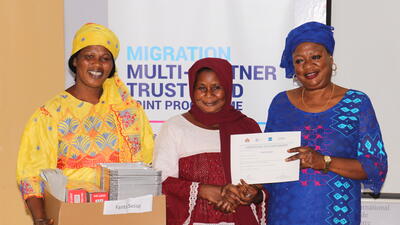Internationalization of the RMB: Implications for women entrepreneurs
Circa 2009, Chinese officials made clear their full commitment to the internationalization of the renminbi (RMB), China’s official currency, and their intent of making Shanghai a leading financial centre by 2020 — less than eight years from now. A formidable goal, undeniably, but China has proven itself capable of making big changes, and quickly.
With this goal in mind, Chinese authorities have taken steps to create a deep and liquid financial market open to foreign investors. In the first instance, Chinese officials have encouraged the use of the RMB for trade-related transactions and have begun actively trading in RMB with neighbouring countries such as Cambodia, Viet Nam, Mongolia, Nepal and the Democratic People’s Republic of Korea, and with the special administrative regions of Hong Kong and Macao. China has also entered into agreements with far-away countries such as Brazil for their bilateral trades to be settled in RMB. This has resulted in demand for RMB deposit accounts by China’s trading partners. In response, Chinese officials have liberalized policies in relation to the holding of RMB-denominated deposit accounts — with banks in Hong Kong SAR and New York now providing such accounts.
In addition, Chinese authorities have authorized the issuing of RMB-denominated bonds in Hong Kong SAR (dim sum bonds) by foreign banks and foreign companies. The Asian Development Bank, McDonald’s Corporation, Caterpillar and VTB Bank (Moscow-based) have all issued dim sum bonds in Hong Kong SAR.
Seismic shifts
While these are important changes, for the RMB to be used as an international currency — which goes hand in hand with Shanghai operating as a global financial centre — China will ultimately have to abandon its longstanding strategy of maintaining an undervalued exchange rate. Such a move will have significant consequences for China’s economy, and will no doubt face intense resistance from Chinese manufacturers who have long benefited from the pegged exchange rate. Yet if China is to achieve its nontrivial objectives, this move is inevitable.
Internationalization of the RMB means major political, economic and social changes for China. It will require China to completely restructure its economy. China will have to focus less on exports and concentrate more on domestic demand, though internationalization in the longer term may make Chinese exporters more competitive. China will have to move away from manufacturing towards services, and it must shift activity from the coasts to the interior. These seismic modifications present vast opportunities for innovation and entrepreneurial activity. Chinese women entrepreneurs are well placed to capitalize on these changes.
Opportunities for entrepreneurial women
Women make up 49% of China’s population and 46% of its labour force, a higher proportion than in many Western countries. This is largely due to Chairman Mao’s famous quote that ‘women hold up half the sky’, meaning they are equally resourceful and therefore should be working equally alongside their male counterparts. Indeed, seven of the fourteen self-made women billionaires on the Forbes world’s richest people list last year were from China.
Chinese women entrepreneurs now account for a quarter of the total number of entrepreneurs in China. The economic changes and opportunities that RMB internationalization promises will bode well for the vast number of Chinese women who are intensely driven, dedicated and educated. Those who develop businesses and products that appeal not only to international buyers but also to the domestic market should fare well. In addition, Chinese women entrepreneurs specializing in financial services will benefit from the larger share of international financial business that will move to Chinese banks as a consequence of the internationalization of the RMB. There will be growing demand for specialized products and financial instruments to hedge currency exposures as RMB holdings increase worldwide. This will expand the financial services sector in China and present new business and work opportunities for Chinese women.
Between 1914 and 1924, in just 10 years, the US dollar surpassed the pound sterling as the leading international and reserve currency. China now seeks to complete a similarly rapid course with the internationalization of the RMB. Whether it will succeed by 2020, we will soon find out. What is clear is that the trajectory has been set, and Chinese officials are not likely to diverge anytime soon. The change in China’s economy will present immense opportunities for Chinese entrepreneurs and, judging by recent statistics, Chinese women are well positioned to take advantage of new offerings. As the centre of global finance shifts towards China, Chinese women will have the privilege of influencing international finance and trade from within China. Given the prominent position that Chinese women entrepreneurs and executives are propelling themselves towards in China, if Chinese officials do achieve their lofty goals by 2020, in eight years women may be shaping global finance and trade like never before.
For more information, please refer to the author’s publication Sovereign Finance and the Poverty of Nations: Odious Debts in International Law (May 2012).














